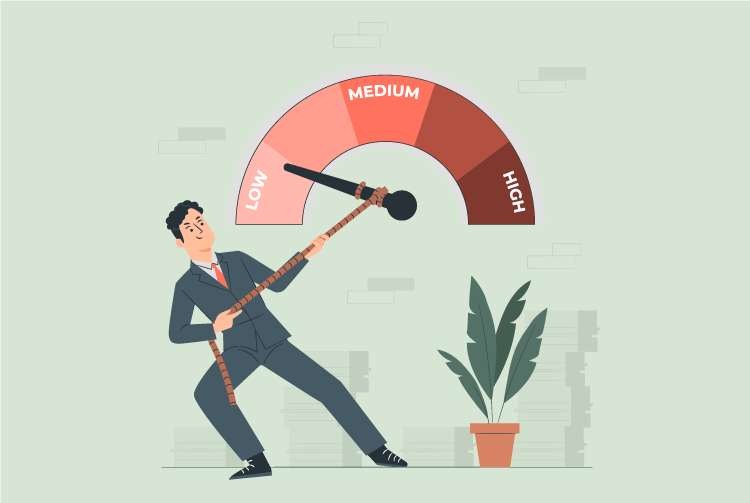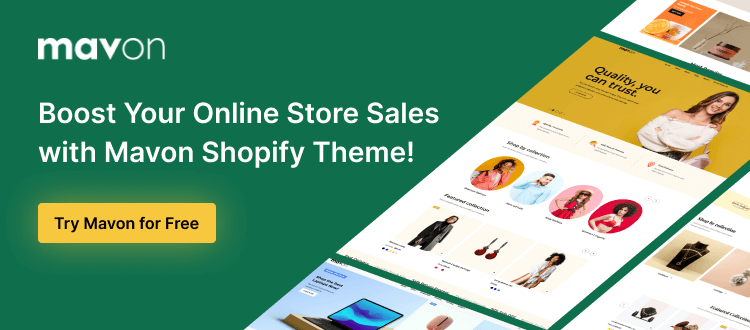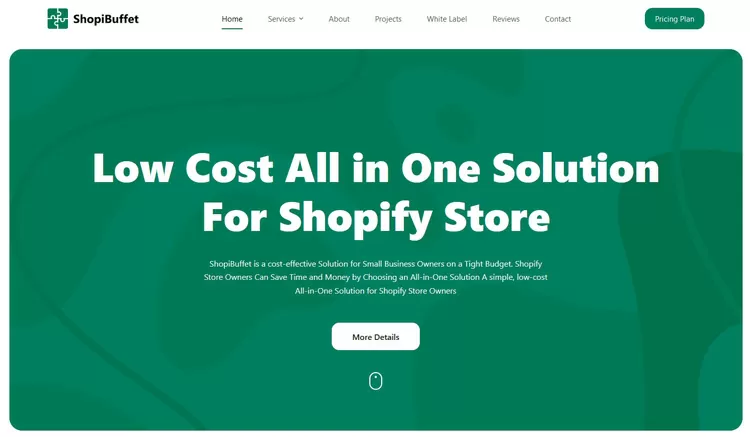As an eCommerce store owner on Shopify, one of your primary goals is to drive traffic and convert visitors into paying customers. However, a high bounce rate can hinder those efforts, indicating that visitors are leaving your site without engaging further.
In this article, we will explore actionable strategies on how to reduce bounce rate on Shopify store. By implementing these techniques, you can create a more engaging user experience that encourages visitors to explore your products, stay longer, and ultimately increase conversions.
Understanding Bounce Rate and Its Impact on Your Shopify Store
Bounce rate, a crucial metric for assessing your Shopify store’s performance, measures the percentage of visitors who land on a page and then navigate away without interacting further. Calculated by dividing single-page visits by total visits, it offers vital insights into user engagement.
For instance, if 100 visitors reach your homepage and 50 promptly exit without exploring other pages, your bounce rate stands at 50%. This metric’s significance lies in its ability to reveal weaknesses in your site’s user experience, helping you pinpoint areas for enhancement.
However, it’s essential to recognize that a high bounce rate isn’t always detrimental. Websites like blogs or news portals often see users reading one article and departing, resulting in naturally elevated bounce rates. Therefore, context matters when interpreting bounce rates, and for some sites, a higher bounce rate might not warrant concern.
Analyzing and Identifying the Causes of High Bounce Rates
High bounce rates can be detrimental to your website’s performance and conversion rates. To address this issue effectively, it’s crucial to analyze and identify the root causes behind the bounce rates. Here are some common factors contributing to high bounce rates:
- Page Errors: When visitors encounter broken links, missing images, or other technical issues on your landing pages, it can lead to frustration and an immediate exit from your site.
- Poorly Optimized Meta Titles & Descriptions: If your meta titles and descriptions do not accurately represent the content of your pages or fail to entice users, visitors may bounce after a quick glance at the search results.
- Low-Quality Content: Thin, irrelevant, or uninformative content can discourage visitors from exploring further. Ensure your content is engaging, valuable, and relevant to your target audience.
- Long Page Load Times: Slow-loading pages frustrate users and often result in high bounce rates. Optimize your website’s performance by leveraging browser caching, compressing images, and using Content Delivery Networks (CDNs).
- Not Optimized for Mobile: With a growing number of users accessing websites via mobile devices, a non-responsive or poorly optimized mobile experience can drive visitors away.
Recommended Blogs for You:
👉 How to Edit Shopify Website: A Beginners Guide
👉 How to Change Order of Products on Shopify: The Ultimate Guide
👉 How to Add Testimonials Slider App to Shopify: A Comprehensive Guide
👉 How to Change Font in Shopify: A Step-by-Step Guide
👉 How To Add a Twitter Feed App To Shopify?: A Comprehensive Guide
How to Reduce Bounce Rate on Shopify Store: Starategies to Follow

Reducing bounce rates on your Shopify store is essential for improving user engagement and increasing conversions. Here are some effective strategies on how to reduce bounce rate on Shopify store to follow:
Improving Website Speed and Performance
Improving website speed and performance is paramount in reducing bounce rates on your Shopify store. Slow-loading pages can frustrate visitors and cause them to leave prematurely. To address this, optimize your images to reduce file sizes while maintaining quality. Utilize content delivery networks (CDNs) to distribute content efficiently and minimize server load times.
Additionally, streamline your website by minimizing excessive scripts and plugins that can hinder performance. Ensuring swift page load times not only keeps visitors engaged and elevates the user experience but also fosters deeper exploration of your Shopify store. This, in turn, reduces bounce rates and increases the probability of conversions.
Enhancing User Experience and Navigation
Streamlining website navigation and improving menu structure
Simplifying website navigation involves creating an intuitive and user-friendly structure. Evaluate your menu items and declutter them, removing unnecessary or redundant links. To effectively arrange your products or content, utilize logical categories and subcategories. Implement dropdown menus for subcategories to help users quickly access specific sections of your store. This organized approach guides visitors and encourages them to explore further, reducing bounce rates.
Simplifying the checkout process and reducing friction
A complex and cumbersome checkout process can be a significant contributor to high bounce rates. Simplify the steps required to complete a purchase. Offer guest checkout options to eliminate the need for account creation, reducing friction. Clearly communicate shipping costs, return policies, and available payment methods to instill trust and confidence in buying process. By minimizing obstacles in the checkout journey, you make it easier for visitors to convert, ultimately decreasing bounce rates.
Implementing clear and descriptive call-to-action buttons
Effective call-to-action (CTA) buttons guide users toward specific actions, such as adding products to the cart or exploring more details. Use concise and action-oriented language on your CTAs, such as “Add to Cart,” “Buy Now,” or “Learn More.” Make these buttons visually stand out by using contrasting colors or bold designs.
Place them strategically on product pages, the homepage, and throughout your site to direct visitors on their journey. Clear and descriptive CTAs prompt engagement and reduce the likelihood of visitors bouncing without taking action.
Grow Your eCommerce Business with Valuable Resources, Tools, and Lead Magnets
- Bring your ideas to life for $1/month
- One platform that lets you sell wherever your customers are—online
- Create a beautiful eCommerce website
- Start for free, then enjoy $1/month for 3 months
- Build your own website in a few steps
- Create a website in minutes easily, secure method
- Turn what you love into what you sell
- Discover the Shopify Point of Sale
- AI Based Business Name Generator
Creating Compelling and Relevant Content
Crafting attention-grabbing headlines and product descriptions
Headlines and product descriptions are the first things visitors encounter on your site. Craft attention-grabbing headlines that pique curiosity and clearly convey the value of your products or content. Use concise and persuasive language to highlight key benefits and features.
In product descriptions, provide detailed information, including specifications, pricing, and unique selling points. High-quality, informative, and engaging descriptions can captivate visitors and encourage them to explore further.
Using high-quality visual content, including images and videos
The Visual content is a powerful tool for capturing visitors’ attention. It’s recommended to use high-resolution images that showcase your products from different angles. Include zoom functionality and image galleries for a better view. Incorporate product videos that demonstrate how the items are used or provide a virtual tour. Visual content not only enhances the user experience but also helps users better understand your products, reducing the likelihood of bouncing due to uncertainty.
Incorporating customer reviews and testimonials to build trust
Customer reviews and testimonials are valuable social proof that can instill trust in your brand and products. Feature authentic reviews and testimonials from satisfied customers prominently on your product pages. Ensure they are detailed and genuine and include both positive and constructive feedback.
These endorsements provide reassurance to potential buyers and can sway them toward making a purchase. Trustworthy content helps lower bounce rates by reinforcing confidence in your offerings.

Optimizing Mobile Responsiveness
Ensuring seamless mobile experience with responsive design
Responsive design is the foundation of a seamless mobile experience. Ensure that your Shopify store is designed to adapt to various screen sizes and orientations, providing an equally impressive user experience on smartphones and tablets.
Elements like text, images, and buttons should be resized and repositioned intelligently to maintain readability and usability. Test your store across different mobile devices to ensure consistency and smooth navigation.
Streamlining the mobile checkout process and reducing friction
Mobile shoppers often seek quick and convenient checkout experiences. Streamline your mobile checkout process by minimizing the number of steps required to complete a purchase. Implement features like autofill for forms and allow guest checkout options to reduce friction.
Optimize your mobile payment gateway to support popular mobile payment methods, making transactions swift and hassle-free. Mobile users are more likely to stay and convert when the checkout process is seamless and user-friendly.
Conducting A/B Testing and Conversion Rate Optimization
Conducting A/B testing and implementing conversion rate optimization (CRO) techniques is a dynamic approach to lower bounce rates on your Shopify store. A/B testing involves comparing two versions of a web page or an element, such as a CTA button or product image, to determine which performs better in terms of engagement and conversions. You can refine your website’s design, content, and functionality by systematically analyzing user behavior and preferences.
Hire Experts to Build Your Shopify Store: Recommended- ShopiBuffet
ShopiBuffet is a top pick if you want to improve your Shopify store but would rather leave the technical details in the hands of professionals. They provides a complete solution aimed at assisting people and businesses to succeed in the online market as experts in enhancing eCommerce platforms.

ShopiBuffet, which is run by a team of seasoned experts, guarantees that customers may concentrate on growth and strategy while they handle the nuances of Shopify. They are a standout option due to their user-friendly platform, knowledgeable design and marketing team, and cost-effective solutions catered to different budgets.
Theme setup, perfect demo setup, rigorous product and collection organization, as well as smart typographic and navigational upgrades are all included in ShopiBuffet’s services. Their attentive staff is dedicated to prompt service and uncompromising commitment to client satisfaction.
Final Thoughts
The procedure of how to reduce bounce rate on Shopify store is essential for converting visitors into customers. By improving the user experience on your website, you can keep potential customers engaged and interested, ultimately increasing sales and revenue. As visitors browse your Shopify store, it’s important to ensure that the website is fast, easy to navigate, and visually appealing.
Investing in search engine optimization, improving product descriptions, and offering live chat support can also make a significant difference in reducing your bounce rate. Ultimately, by analyzing data and continuously making adjustments, you can create a better user experience that keeps visitors coming back for more.


